It proved to be smooth sailing as Des Moines Metro Opera thrillingly met the substantial challenges of Wagner’s seminal work, The Flying Dutchman.
They started by assembling a nonpareil cast that would be the envy of any festival in the world. In the title role of the Dutchman, strapping bass-baritone Ryan McKinny was really all that one could wish. It was thirteen years ago that I first enjoyed him performing this part, and his interpretation has only deepened and become richer over time. His is an imposing, sizable voice which rolls forth imperiously, but he is also able to effectively scale back the volume and accomplish hushed phrasing that is personable, warm, and mesmerizing.
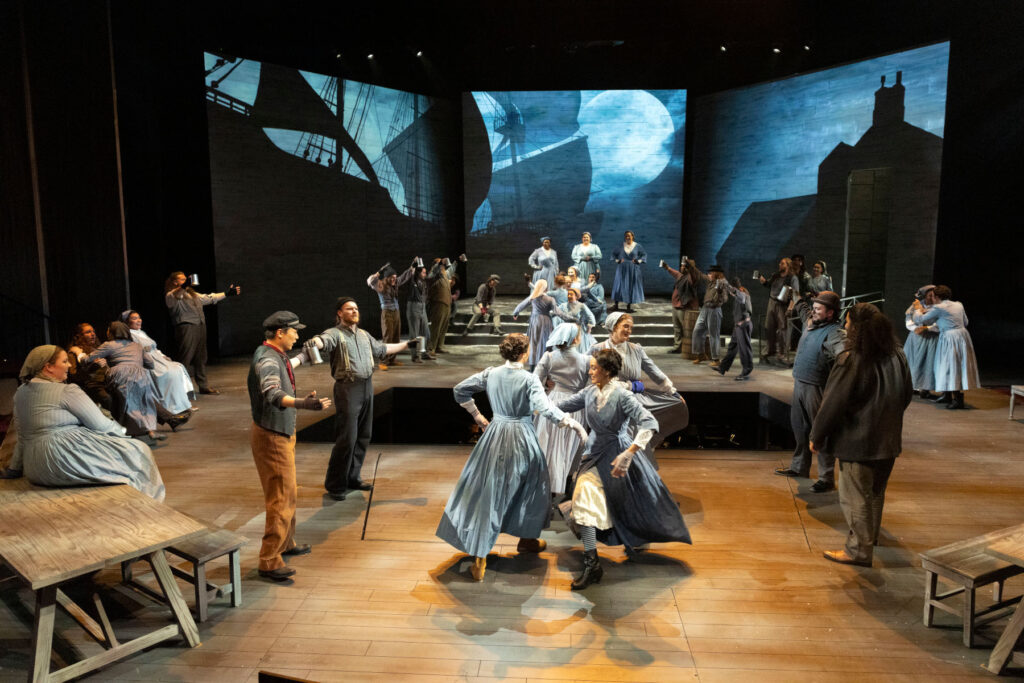
Mr. Ryan commanded the stage from his first extended solo, Die Frist ist um. It was immediately apparent that at this point in his career, there is nothing about this role that eludes him. His weighted, ponderous delivery perfectly conveyed the character’s world weariness, and his powerfully hurled declamations dripped with agonizing despair. But Mr. McKinny has also learned to infuse his tone with brighter colors as hope and salvation appear to become possible. This was as well-rounded, well-sung, and magnetic a performance of the Dutchman that you will likely ever encounter.
In the punishing role of Senta, we were fortunate indeed in the choice of Julie Adams. Her well-focused soprano had appreciable point to it, but more important, she had an appealing, womanly warmth to her sound, and her singing was even in all registers and volumes. Ms. Adams’ opening aria was exceptionally well realized and varied, almost a mini-drama-within-a-drama. She immediately captured our interest and captivated our ears. In the great Senta-Dutchman duet, Adams and McKinny fed off each other’s heat and energy beautifully, with each successive phrase surging with more intensity, resulting in an overpowering conclusion.
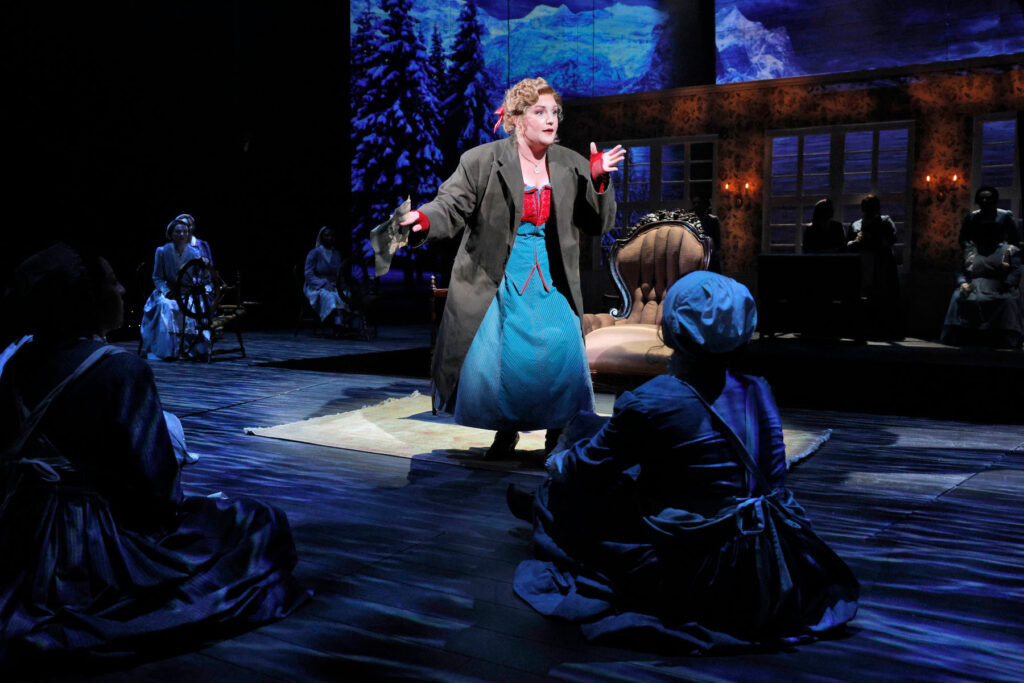
Tenor Joseph Dennis ably embodied the anguished lad Erik, his shining steady tenor occasionally falling victim to the sustained tessitura. Still, he is a seasoned pro, and if he pulled a trick or two to negotiate a phrase here and there, he looked boyish, and he found plenty of dramatic nuance in his two pivotal scenes. As Daland, Kristopher Irmiter was an excellent foil (or is it fool?) for the Dutchman, his mellifluous, rounded bass-baritone filling the duplicitous character with unctuous, deliberating calculation.
Stephanie Sanchez made an especially solid impression as a sassy, gutsy Mary, her attractive, secure mezzo ringing out with ease. As the Steuerman, Apprentice Artist Demetrious Sampson, Jr.’s attractive tenor had ample sweetness of tone linked to a clarion kick.
Under the laudable direction of Lisa Hasson the forty singers that are members of this season’s Frank R. Brownell III training program were nothing short of superb as the Dutchman chorus.
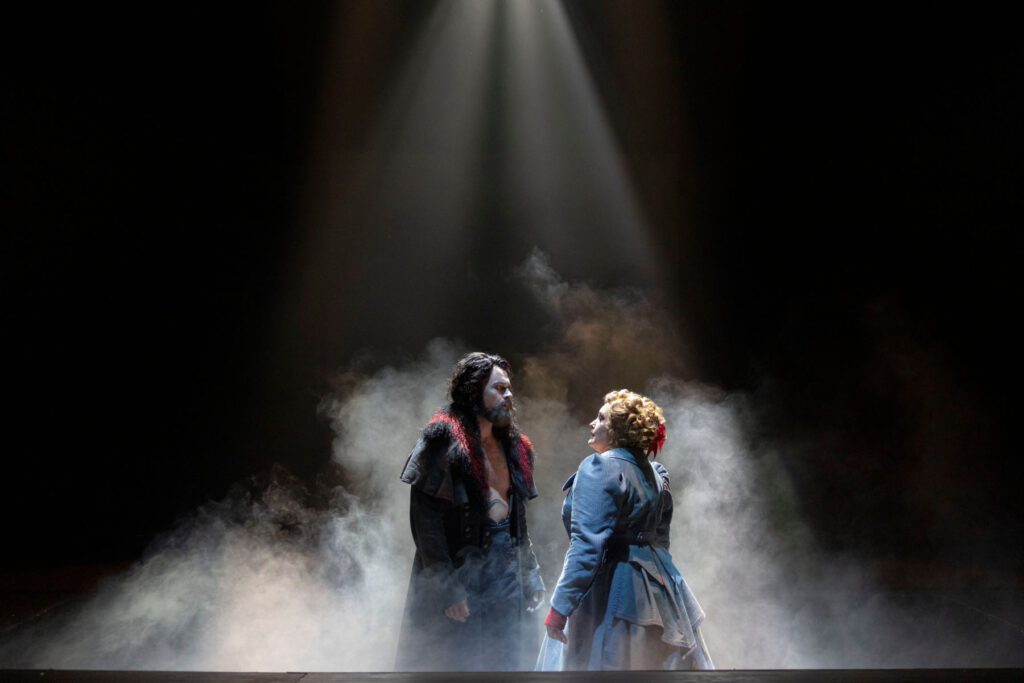
I have never heard such overpowering and ravishing excellence from a full-throated choral group, enveloping the house in incomparable effects just ten feet from where I was seated! When was the last time choral singing in an opera gave you recurring goosebumps? Maestra Hasson has outdone herself and every single chorister deserved the vociferous reception they received at curtain call.
Conductor David Neely certainly worked his own wonders in the pit, cueing the orchestra and singers from his vantage point, sunken in the middle of the action, with inspired precision. Each year, Maestro Neely brings together top musicians from all over the country and never fails to skillfully knit them together to the highest level of festival quality. To my ear, the results this season were exceptionally fine, and on this evening, Neely elicited a glowing reading of this demanding masterpiece. Special kudos to the horn section, who charted their way through the score’s expectations with distinction.
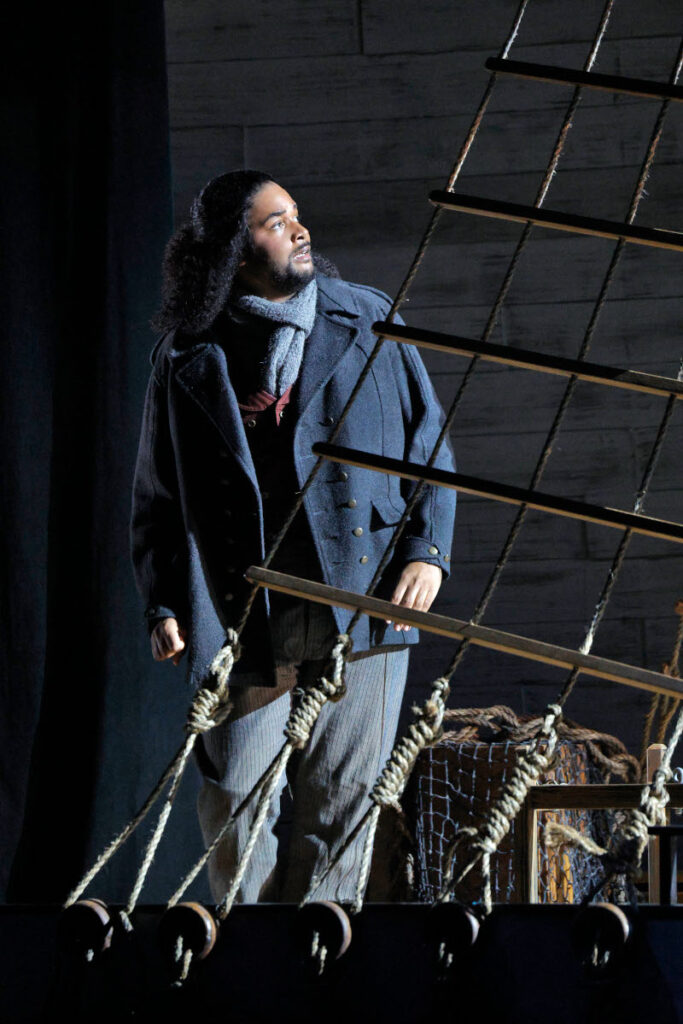
Director Joshua Borths has put his stamp on the staging with great invention. Without spoiling any effect, he staged a pantomime during the overture that cleverly sets up Senta’s obsession with the Dutchman and brilliantly suggests a union of spirits at opera’s end with an assist from the trap door. It is never a question of “if” the mid-stage trap door will be used at DMMO, but “how” and on this occasion it was miraculous.
Other than the rollicking scenes where the chorus can overtake the stage, this is quite a talky piece, with long stretches offering limited opportunities for movement. Mr. Borths has solved that by using the layout of the thrust space to keep characters logically moving about so that they play to all sides of the house. In the great duet, he has Senta and the Dutchman playing a sort of a cat and mouse game, circling each other (and the stage ) and sizing each other up, before finally standing still and uniting. Moreover, his crowd movement was masterfully fluid and created shifting, meaningful stage pictures. Nora Winsler ably assisted with well-considered folk inspired choreography.
I greatly enjoyed the ship’s deck location vacillating between the forward thrust with ship’s helm, and the physical replica of the ship behind the main curtain. That was the work of set designer Steven C. Kemp, who kept things simple but effective with flown in scenery like Daland’s house, well-selected set pieces, scrim curtains, and projection surfaces. A series of steps upstage center led to the focal point of the Dutchman’s ghost ship.
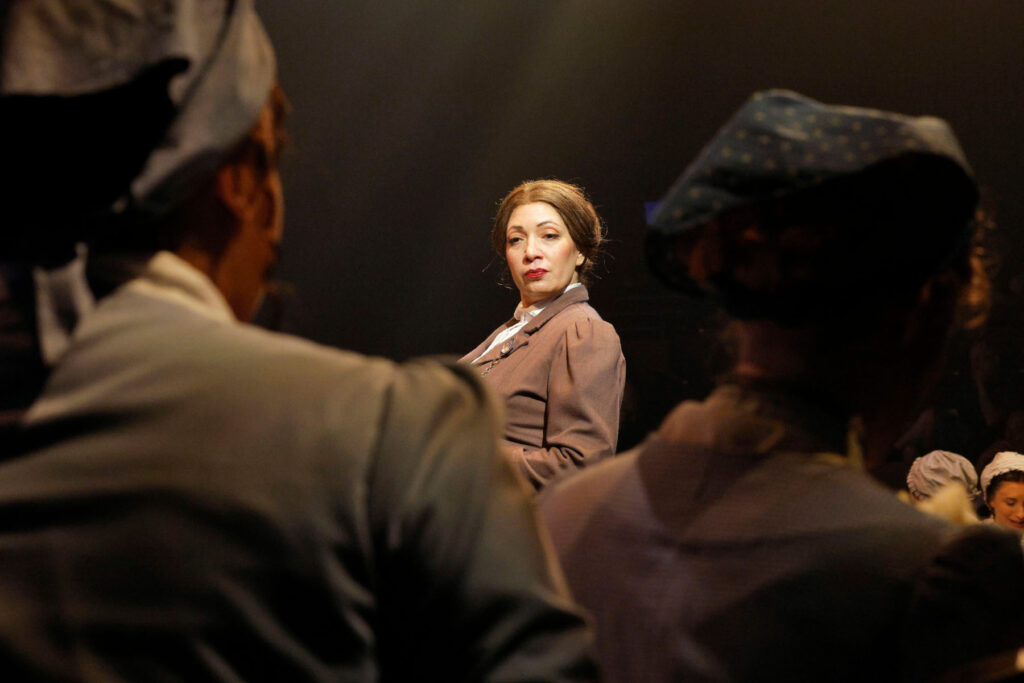
Lighting designer Kate Ashton helped underscore that apparition with evenly spaced floodlights directed from those nether regions focused straight into the audience; while projection designer Ian Wallace showed us a blood red outline of the ship’s shadow. Ms. Ashton also deployed many compelling isolated specials and incorporated skillful use of follow-spots. Mr. Wallace obliged with a cornucopia of impactful images including fire, waves, nautical effects, and more that bathed the backdrop, the proscenium stage, and the entire floor with vivid visual resonance.
Erikr Teague’s well-chosen period costumes contributed a great deal, from the swarthy sailors to the charming women’s attire, to the mysterious bare chested Dutchman with his signature overcoat. Indeed an overcoat figures prominently in the staging as a sort of visual leitmotif. Brittany V.A. Rappise’s wig and make-up design was once again outstanding, and her work has been superlative all festival long.
One final dynamic that made this performance so special, is that among the 467 spectators in attendance was native Iowan, Simon Estes, who himself was one of the most acclaimed interpreters of the Dutchman in the last half century, and the first African-American male to sing the role at the famed Bayreuth Festival. Where but at Des Moines Metro. . .?
James Sohre
Der Fliegende Holländer (The Flying Dutchman)
Music and Libretto by Richard Wagner
The Dutchman: Ryan McKinny; Senta: Julie Adams; Erik: Joseph Dennis; Daland: Kristopher Irmiter; Mary: Stephanie Sanchez; Steuermann: Demetrious Sampson, Jr.
Conductor: David Nealy; Director: Joshua Borths; Scenic Design: Steven C. Kemp; Costume Design: Erik Teague; Lighting Design: Kate Ashton; Projection Design: Ian Wallace; Chorus Master: Lisa Hasson; Choreographer: Nora Winsler; Wig and Make-up Design: Brittany V.A. Rappise
Top image: Kristopher Irmiter (Daland) with Chorus
All photos by Cory Weaver